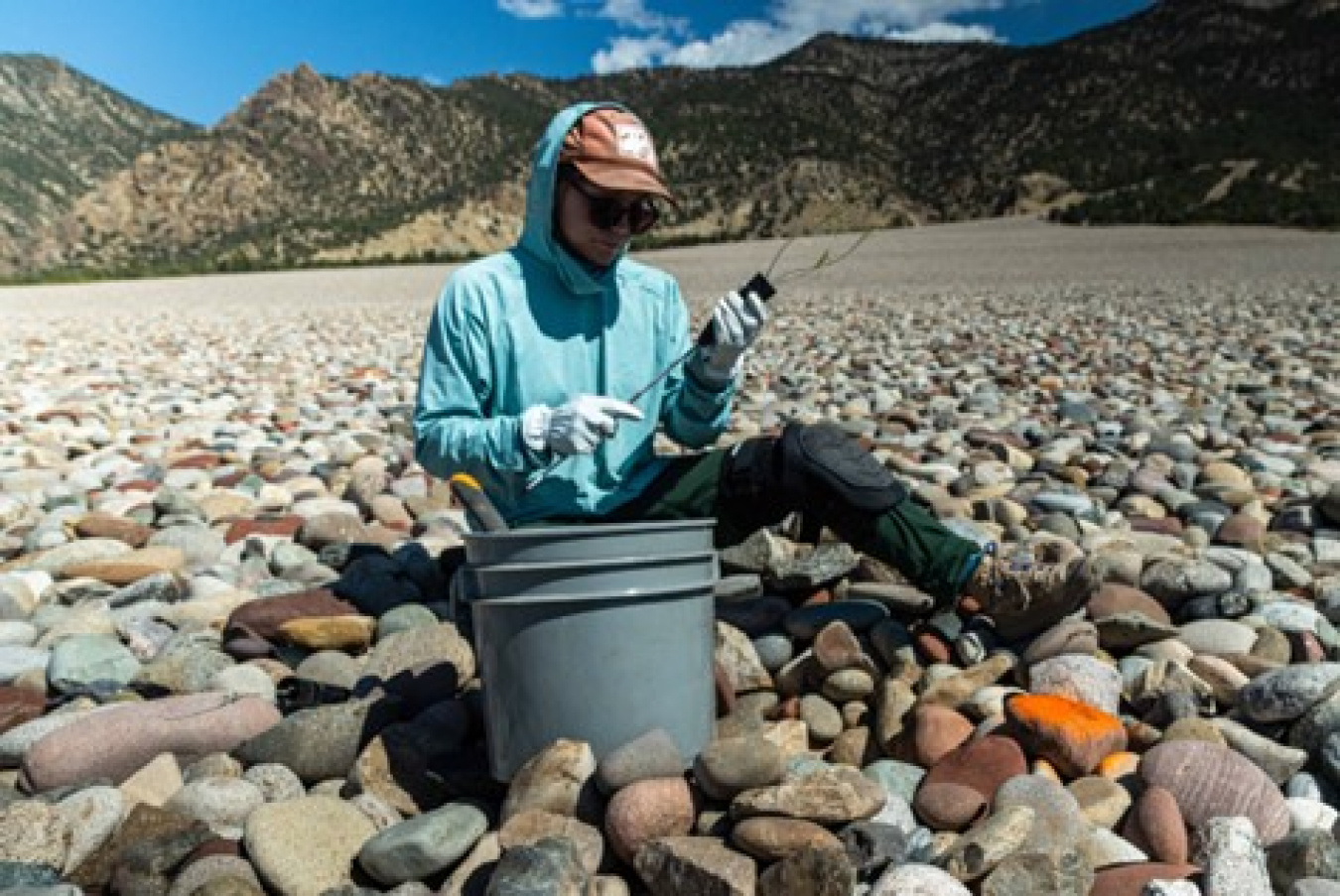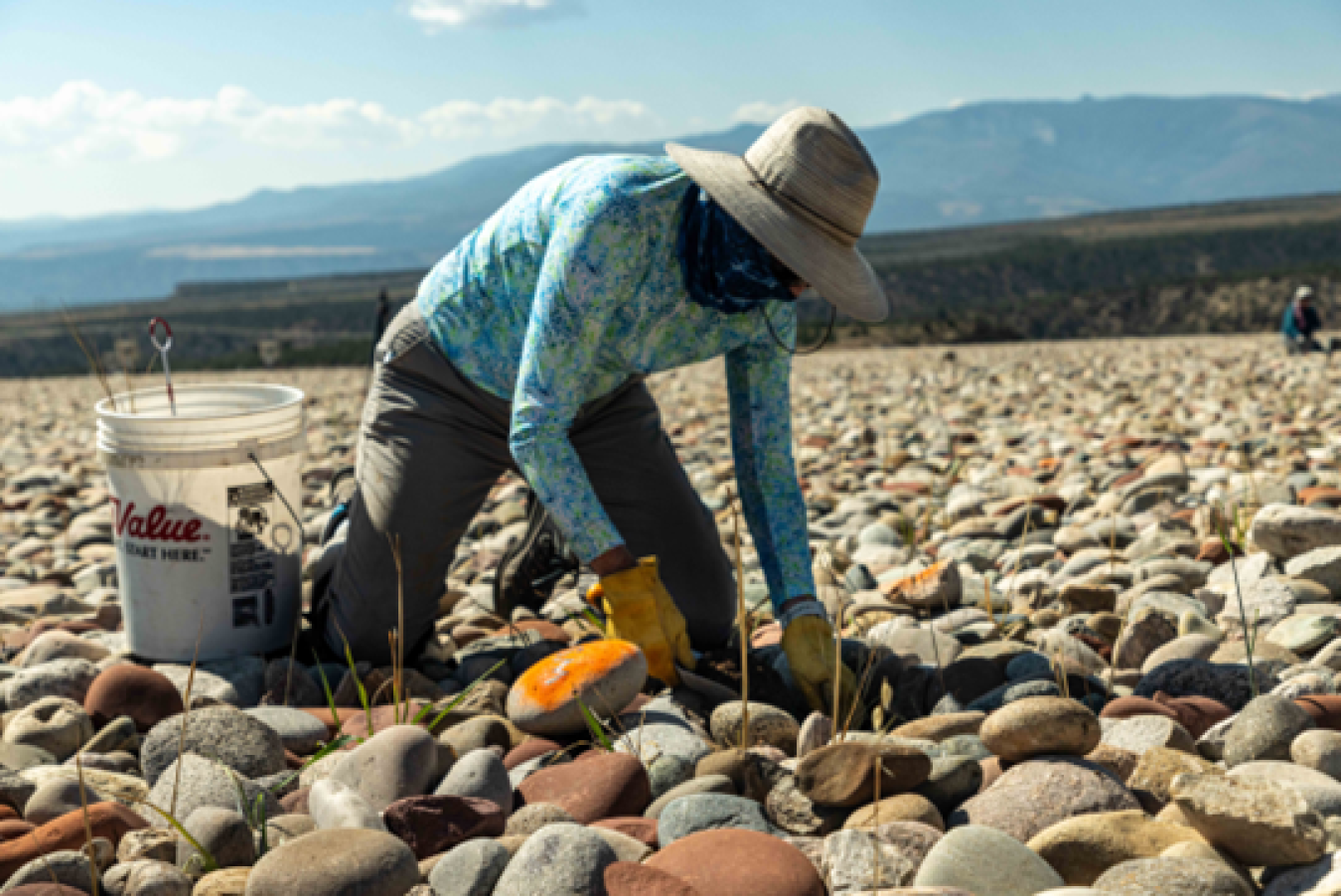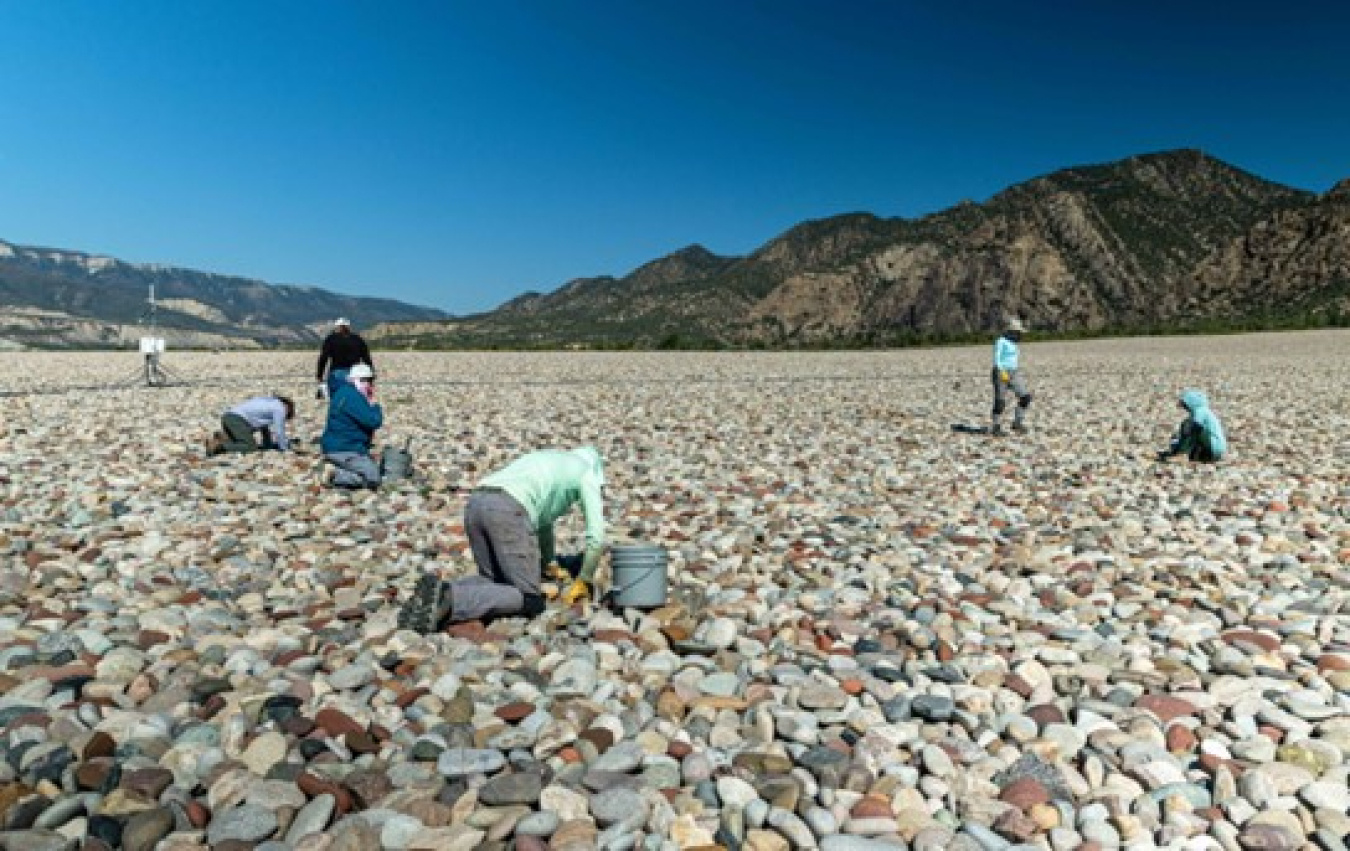Revegetation effort will help set course for future management of mill-tailing disposal cells
November 20, 2025When the data analysis ends, the sweat begins.
Office of Legacy Management Support Partners (LMSP) have been hard at work, planting native vegetation on LM’s mill tailings disposal site in Rifle, Colorado, as part of a pilot test to help manage pore water in the disposal cell.
Scientists with LM’s Applied Studies and Technology (AS&T) team are tracking three separate plots as they test different ways to control rain and snowmelt infiltration at the site.
LMSP staff are planting a specialized mix of shrubs, forbs, and grasses to accelerate natural revegetation. By doing so, AS&T scientists intend to drastically reduce the amount of water infiltrating the cell and contributing to pore water accumulation.
LM has an extraction system that manages pore water, but that solution isn’t sustainable for long-term management, said Site Manager Mary Young.

“We manage these sites in perpetuity and it’s our mission to think about long-term solutions. Plants give us that solution by providing a passive, low cost, sustainable, and effective method for managing water infiltration into the future,” she said. “It’s also a bonus that it’ll make the disposal cell blend into its surroundings a little more and provide beneficial habitat.”
On the eastern third of the cell, which is being used as the control site, nature is being allowed to run its course. On the middle third of the cell, staff are seeding and planting into the existing disposal cell cover. On the western third of the cell, AS&T scientists are amending the cover with a soil and gravel admixture before planting.
Up until this point, computers and installed sensor data had been the most useful tools. Now it was time to pull on gloves and pick up shovels.
Every gardener knows that in order to plant something, you first must dig a hole. In the case of the Rifle site, the “gardeners” are sowing a much different environment: a rock covered disposal cell.
“You may think revegetating a 71-acre rock cover disposal cell is crazy. Well, so does AS&T,” said senior scientist David Holbrook. “We are generating data that will refine our future planting strategy. In reality, we may only need to ‘enhance’ five or 10 acres. That is why we are starting with a pilot test.”

Given the scale and complexity of the disposal cell, a multi-layered, 71-acre engineered structure encapsulating contaminated material with up to a 1,000-year shelf life, AS&T recognizes the importance of designing the project to maximize effectiveness and efficiency. For example, the team is utilizing onsite soil stockpiles generated from the pore-water extraction project completed the previous year. Specialized seed mixes and planting methods are used to maximize revegetation success while also reducing costs. Advanced technology will be used to locate overly saturated areas in the cell and track plant growth. That’s not to say the team members won’t be getting their hands dirty – but not without a little help.
Enter the Upper Colorado Environmental Plant Center (UCEPC) and the Western Colorado Conservation Corps (WCCC). The UCEPC, an extension of the Natural Resource Conservation Service, specializes in disturbed-land reclamation and was contracted to grow plants for the project – some of which were grown from seed collected at the Rifle site. WCCC, a nonprofit with crews of young people to assist in land management projects, will help install these live plants by hand.

Collectively, these efforts are designed to produce a low-maintenance, long-term pore-water management strategy that improves over time – in other words, strategic revegetation leads to plant establishment, then to seed production, clusters of plants grow closer together covering more area, more water is intercepted, and the cycle repeats. AS&T scientists anticipate the strategy will produce measurable results within two or three growing seasons.



